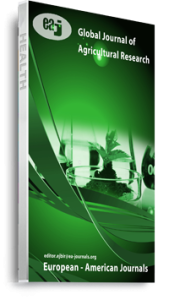The study examined the profitability and determinants of output of rice production in Anambra State, Nigeria. The specific objectives were to: estimate the profitability of rice production; establish the determinants of production output; and identify constraints to rice production in the area.Multistage, purposive and random sampling methods were used to select respondents. Though 378 copies of the questionnaire were administered to the farmers by personal interview, 315 adequately filled copies were sorted and used in data collation. Primary data used for the study were collated and analyzed by means of descriptive and inferential statistical tools such as the enterprise budgeting technique (gross margin, net farm income, mean net farm income and net return on income) Ordinary Least Squares (OLS) regression, One- way ANOVA and Scheffe’s Multiple Comparison test. Findings on the profitability of rice production in the area showed that per hectare gross margin figures were N315,300, N285,600, N302,800 and N301,233 for Anambra, Aguata and Awka Agricultural zones, and the State (study area) respectively. Net return on investment figures were 1.49, 1.23, 1.30 and 1.35 respectively. The NROI values indicate that for every N1.00 investments in rice productions in the three zones and the State the farmers are likely to realize on one hectare N1.49 in Anambra Agricultural zone, N1.23 in Aguata zone, N1.30 in Awka zone and on the average N1.35 in the State, hence rice production is a profitable enterprise in the area. Meanwhile, Schefee’s Multiple Comparison test indicated no significant difference between per hectare mean net farm incomes realized by farmers from paired agricultural zones. Findings on the influence of socio-economic characteristics of the farmers on production output indicated that five regressors (educational level, farming experience, farm size, amount of credit obtained and cost of inputs) exerted independent and statistically significant influences on output while the rest six did not have significant influence on output. Constraints to rice production posited insufficient fund as the most serious problem of rice production in the area, followed by scarcity and high cost of labour, scarcity and high cost of quality seeds, among others. Government should encourage financial institutions to make loans available to farmers and form cooperative societies to obtain bulk purchase of high quality seeds and other input resources.
Keywords: Constraints, Output, Production, Profitability

